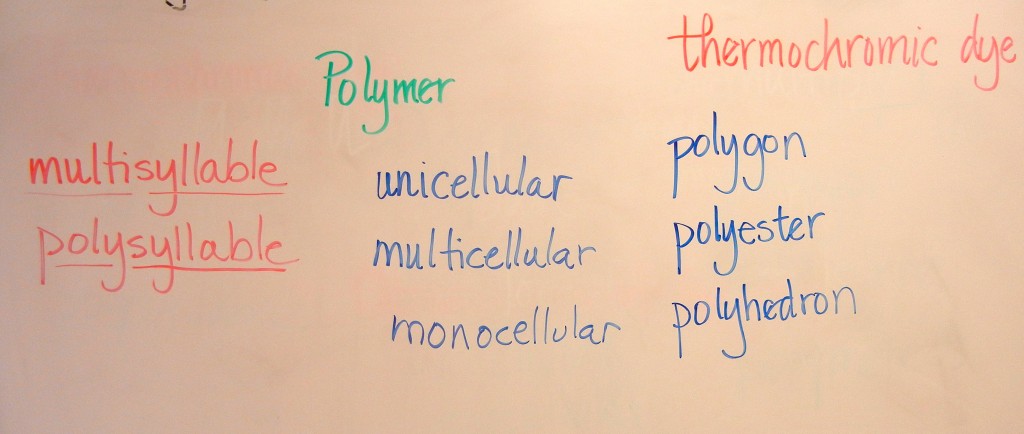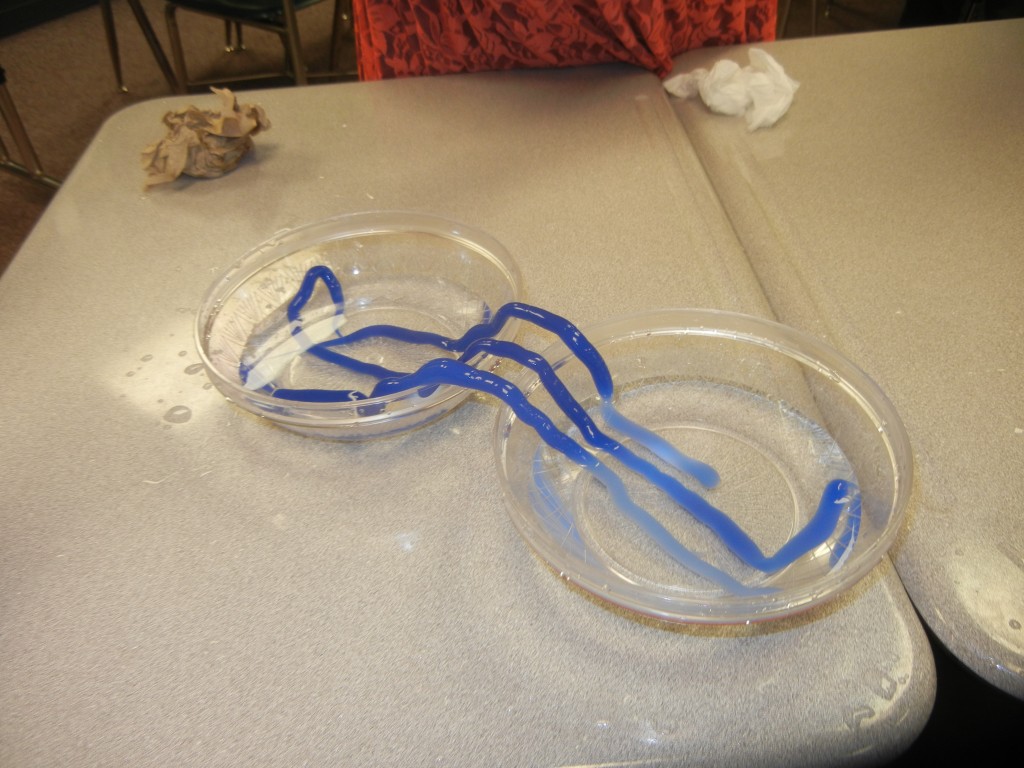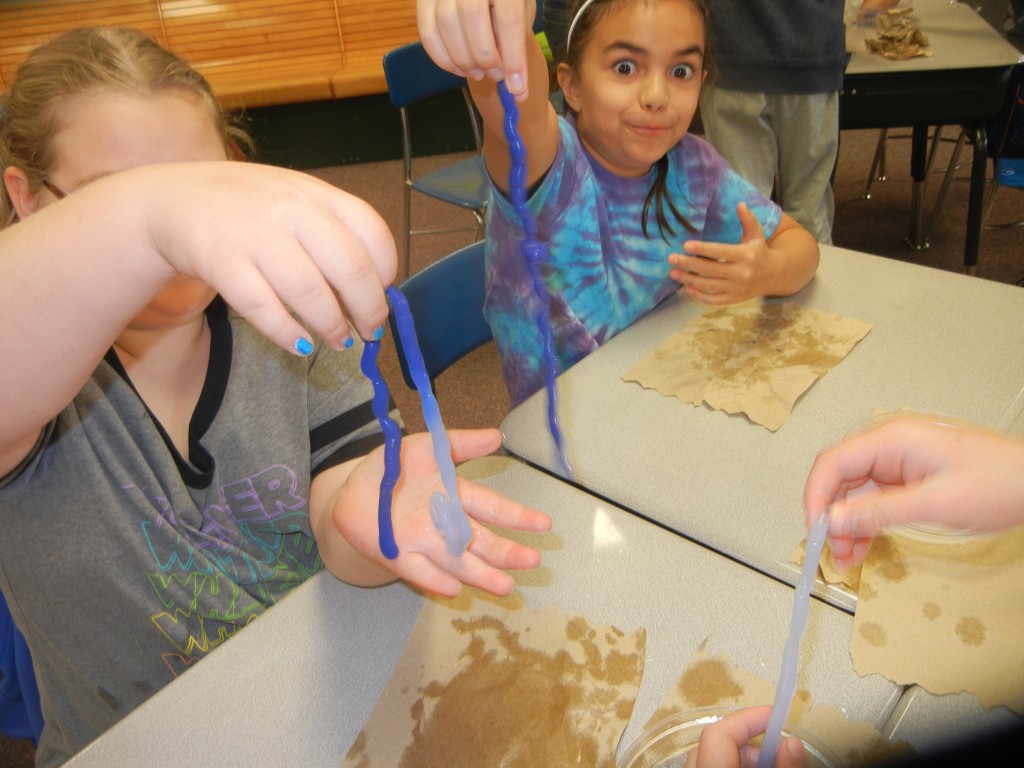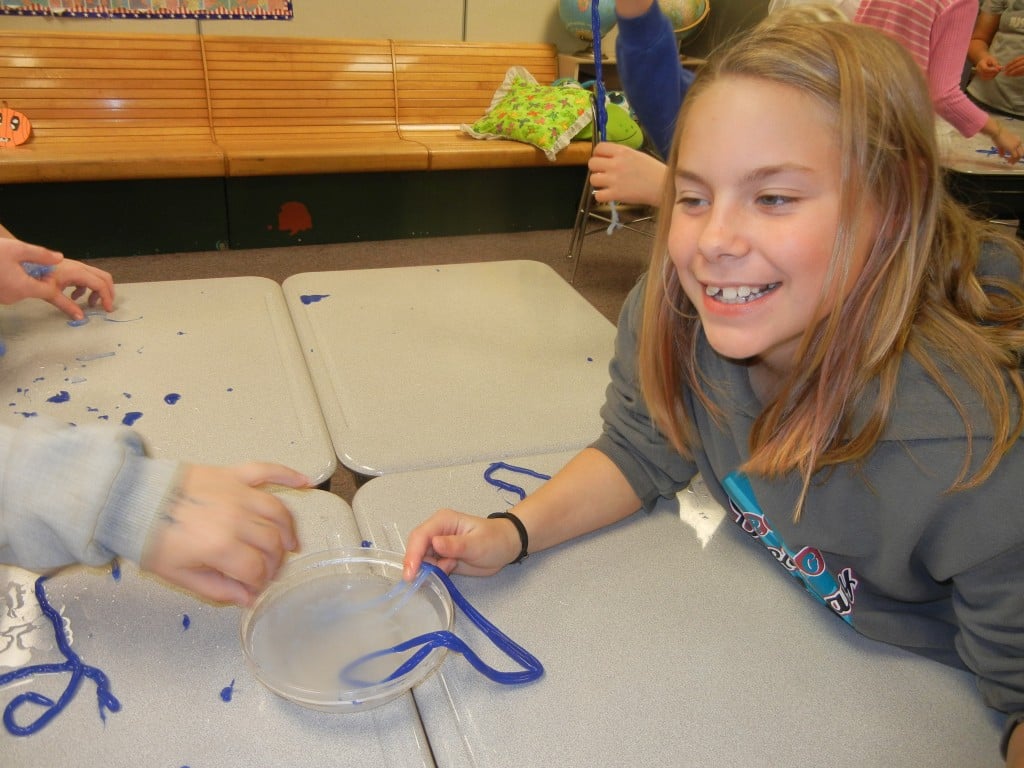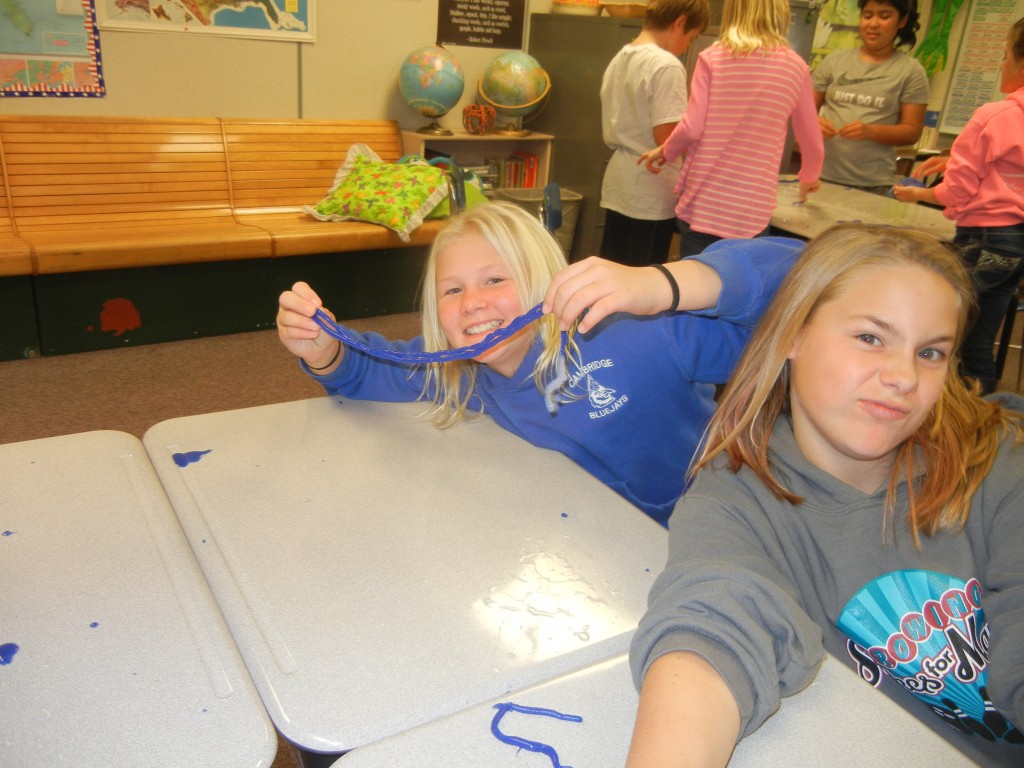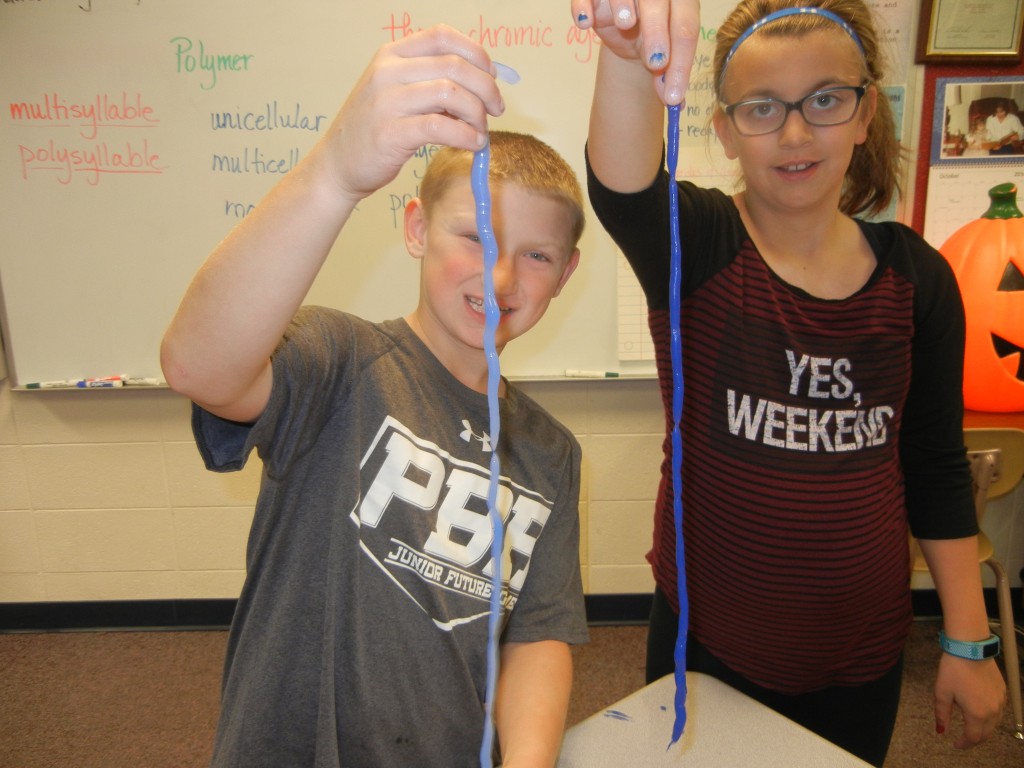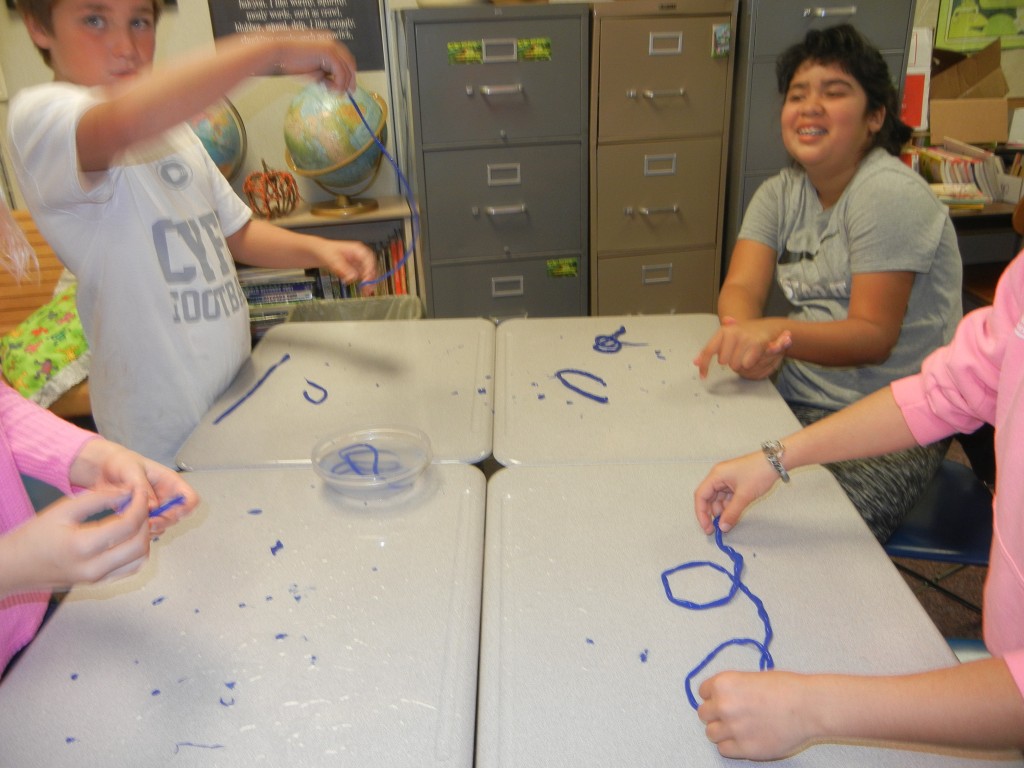Friday was one of those days when we were all needing to get our hands on some science! I purchased some supplies from Steve Spangler Science and the students had an introduction to polymers. Of course the first thing I did was to write the word <polymer> on the board. No one had ever heard that word before, but right away they wondered if it was related to <polygon>, <polyester>, and <polyhedron> because those were words that they HAD heard before. I wrote those to the side. It was obvious that the small collection of words all had <poly> in common, but no one was sure what it meant.
Next I wrote the words <multisyllable> and <polysyllable> on the board. I said that these two words meant the same thing. Since we had recently talked about multicellular and unicellular in science, the students knew that <multi-> had a denotation of “many or much”. They were able to tell me that a word that was multisyllabic was a word with more than one syllable, and that a polysyllabic word would also be a word with more than one syllable. Even though multisyllable is used quite commonly, I prefer to use polysyllable. And here’s why.
I pointed out the medial <y> in <syllable> and wondered if anyone remembered the probable origin of words with a medial <y>. No one did. Then I said, “Remember when we looked at <gymnasium>?” Almost immediately, there was laughter and several said, “Greek!” (The laughter had to do with the Etymonline entry of <gymnasium>. I won’t spoil it for you. Go find out for yourself!) Next I pointed out that <poly-> was also of Greek origin. When we can put two morphemes together that are each from Greek, the whole word has Greek ancestry. If we use <multi-> with <syllable>, we are using a Latin stem with a Greek stem. That is called a hybrid. It still works as a word, and people understand what that is, but it’s like this — once you know the origins of morphemes, you are more likely to want to see them paired with morphemes of the same origin. That is why I prefer <polysyllable> over <multisyllable>. The students understood and accepted that logic.
Then I wrote the words <multicellular> and <unicellular> on the board. I underlined <multi-> and <uni-> in each word. I posed this question: If the stems <multi-> and <uni-> are from Latin, what language do you suppose <cell> is from? They guessed Latin.
I asked, “What would happen if we paired <poly-> with <cellular>?
Luke said, “We’d have a hybrid word.”
“Would we all understand what it meant?”
“Yes.”
I wrote <monocle> on the board and underlined <mon->. At least a few students in each class knew that a monocle was a single lens used to see. I pointed out that <mon-> was the opposite of <poly-> and was also from Greek.
I asked, “What would happen if we paired the stem <mono-> with the stem <cellular>?
Brynn said, “We’d have a hybrid.”
“Would we all understand what it meant?
“Yes.”
“Now that we know that the stems <multi-> and <uni-> are from Latin, and the stems <poly-> and <mono-> are from Greek, perhaps we will be more interested in pairing them up with a stem of the same origin.
Then, without prompting, Carter raised his hand and said, “I’m thinking about <universe>. Is the <verse> part from Latin then?”
“What we now know about the stem <uni-> certainly makes it seem likely. Is there a way to find out for sure?”
“Carter replied, “Etymonline! Can I go look now?”
It was time to go back to where we started. The students could now tell me that a polygon could have many angles (from Greek gonos). Surprisingly, one student even knew that a polyhedron was a solid shape with many faces (from Greek hedra)! I explained that polyester is a synthetic textile made from many polymers. So what was a <polymer>?
They knew that <poly-> had a denotation of “many” and I added that <mer> From Greek meros had a denotation of “parts”. We were going to look at a thing with many parts. In this case the parts are called molecules and they link together under certain conditions as a long chain. The powder we had mixed in the warm water would create such a condition. When I squirted the blue liquid into the bowl at each table, the molecules in the liquid would instantly form long chains known as polymers.
After the students had a chance to play with their worms and discover that the outside felt more like a balloon skin and the inside was liquid and watery, there was yet another interesting word to talk about.
The worms were a dark blue until I came around and put hot water in the bowls. When the students dipped the worms into the hot water, they faded to an almost white color. I directed their attention to the board once more and told them that the worm goo was made with a thermochromic dye. It felt so good for the students to come across an unfamiliar word, and yet to be able to say without hesitation that its meaning had something to do with heat! One of the boys enthusiastically remarked, “The hot water triggered a color change!”
On Monday I intend to revisit the word <thermochromic>. I’d like to talk more about the stem <chromic> and then do a simple activity with chromatography. We’ll use markers to draw on coffee filters, and then dip one end in water and watch the marker separate into a range of colors. The most surprising for me is always the range of colors in black marker (not Sharpie). We’ve been encountering the base <graph> quite a bit, and this will be just one more opportunity to see it in another word. I will start by asking for word sum hypotheses for <thermochromic>, <chromatography>, and no doubt <monochromatic>. I know they will enjoy this!

